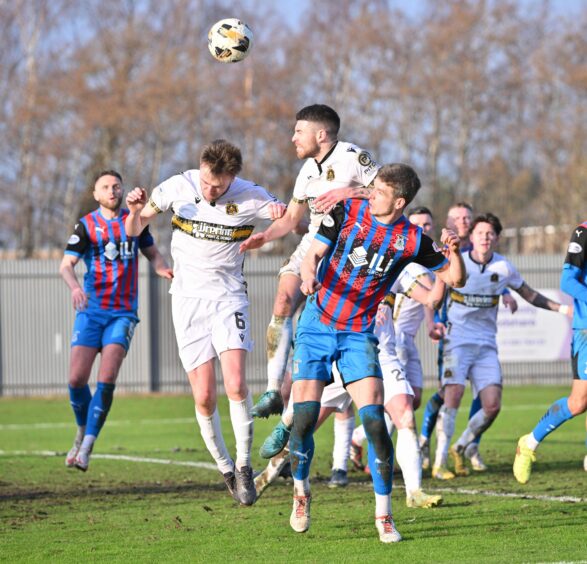With the split in the Scottish Premiership kicking in this weekend, and the rest of the divisions having just four games to go, we are fast reaching the climax of what has been a ridiculously unpredictable SPFL season.
The top-flight has been bizarre – with Aberdeen contributing in spectacular fashion.
Having put together a record-breaking start to the campaign, they then imploded, and the 14-match run without a win was the third-worst by any club since the new league format began in 2013.
Hibernian’s winless sequence was not as long – nine games – but it was enough to see them still rooted to the foot of the table in late November. Since that point, they are unbeaten in 16 league matches, have comfortably secured a top six finish, and are favourites to clinch third place.
The “form table” from their dramatic 3-3 draw with Aberdeen sees Hibs on 38 points, six clear of both Celtic and Rangers.
Champions Celtic were the model of consistency until the turn of the year, but even they have wobbled since, losing four out of 14, and being beaten last time out by bottom side St Johnstone.
Their Glasgow rivals have been all over the place – the seven defeats so far suffered among the worst returns they have had in the past four decades.
Hearts are another side to have experienced big swings in form, but still have a chance to make the top half, which they will do if results go their way on Saturday. If they lose to Motherwell, and slip down, such is the competitive nature of the division, they could yet face a relegation battle given the five sides immediately below them are separated by just four points.
Even St Johnstone, after what they did last Sunday, cannot be ruled out!
All of which further reinforces my feeling that the current discussions about restructuring the league set-up are an unnecessary waste of time.
What we have has served the top-flight well, it has added drama and excitement to the second half of each of the seasons it has been in operation, and more often than not, it has been the last week or two before the big decisions are settled.
The play-offs have also been a huge benefit to the three 10-team divisions below the Premiership.
With four games left in the current campaign, only Dumbarton know their fate – the other 29 sides still have something to play for. That is clear evidence of a format which works, so why even consider changing it?
I have seen supporters calling for a 16 or 18-team top division.
This country is not big enough to sustain that. We do not have the strength in depth.
Multiple play-offs might alleviate that, but even so, the television companies, whose money is crucial to the game, would not accept losing the four Celtic-Rangers encounters which boost their ratings.
My BBC colleague Allan Preston suggested three divisions of 14 with a six-eight split after 26 matches. That would give top half clubs 36 league games and the bottom half 40. Throw in the play-offs, and that might work.
Anything else would be pointless, tinkering for the sake of it, and kill off a set-up that works just fine.
If it ain’t broke, it doesn’t need fixing!
Highland League champions face stiff challenge in pyramid play-offs
The Highland League title race has again gone to the wire, with the championship once more being settled on the final day.
Given Brora Rangers host bottom side Rothes, it seems certain they will claim the crown.
Challengers Brechin City will be expected to see off Lossiemouth, and if the results do pan out, it will mean the Glebe Park club missing out on goal difference for the second successive year.
The season before they were beaten on penalties by Spartans in the play-offs.
It shows just how difficult it is to reclaim SPFL status – and Brechin now face the prospect of a fifth year on the outside.
East Kilbride have again won the Lowland League and will be favourites in the semi-final, so even if they do the business on Saturday afternoon Brora still face a stiff challenge to reach League Two.


Conversation